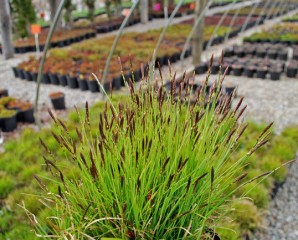Definition of a Native Plant
A native plant is one that lives or grows naturally in a particular region without direct or indirect human intervention. It is a part of the balance of nature that has developed over hundreds of thousands of years in a particular region or ecosystem (USDA Natural Resources Conservation Service). Our indigenous insect and animal species have co-evolved with our native plants for mutual benefit.
Why native plants are important and the benefits of using them
The Native Plant Trust states, “All life on earth depends on plants. Native plants are the cornerstone of Earth’s ecosystems and the base of the food chain that leads to our dinner tables. They evolved in and define particular locations, where they provide the habitats—food and shelter—that specific insects, birds, mammals, and other animals need. Together, native plants and animals form a web of mutually beneficial interactions that is greater than the sum of its parts: an ecosystem.”
The American Society of Landscape Architects states the benefits of native plants:
a) Native plants are healthier, stronger, and low maintenance – Plants native to an area are more likely to establish quickly and will naturally be hardy and healthy. Native plants have evolved over thousands of years, adapting to thrive in particular areas—they grow in harmony with the environment, the soil, the water supply, the varying weather throughout all the seasons, and other native companions.
b) Native plants create wildlife habitats – When native plants thrive in their original environment, they create a natural habitat for wildlife that is beneficial to the environment. Besides the obvious pollinators, like bees, birds, and butterflies, native plants can also help create homes for small animals, warm and cold-blooded, and microscopic organisms in the soil. All these living things have jobs to do; the natural environment promotes a symbiotic relationship.
c) Native plants help the environment. Native plants also have other benefits. They require much less watering, fertilizer, and pesticides. In fact, they can prevent water run-off and improve air quality. Native plants used in place of turf grass can help decrease pollution because they eliminate the need for mowers and other equipment. Native plants also have the ability to pull and store excess carbon.
How to Use Native Plants
Groundcover – Native plants grow in clumps in the wild, so can be planted more densely than comparable non-natives. Weeds are crowded out, thus minimizing the need for mulch. The following, along with any native fern, work well under taller perennials, shrubs and trees:
Asarum canadense Wild Ginger
Bouteloua gracilis Blue Grama Grass
Gaultheria procumbens Wintergreen
Geranium maculatum Wild Geranium
Pachysandra procumbens Allegheny Spurge
Sedum ternatum Woodland Stonecrop
Sporobolus heterolepis Prairie Dropseed
Tiarella cordifolia Foamflower
Waldsteinia fragarioides Barren Strawberry
Foundation Plantings – Mix native shrubs with the standards (boxwood, holly, pieris):
Ceonanthus americanus New Jersey Tea
Comptonia peregrina Sweet Fern
Myrica pensylvanica Northern Bayberry
Rosa virginiana Virginia Rose
Spiraea latifolia Meadowsweet
Viburnum acerifolium Mapleleaf Viburnum
Woodland Edge – Native plants are a great way to bridge the [gap] between unstructured wooded areas and a landscaped yard. Consider a border of the following:
Carex pensylvanica Pennsylvania Sedge
Diervilla lonicera Northern Bush Honeysuckle
Kalmia latifolia Mountain Laurel
Rhododendron maximum Rosebay Rhododendron
Clethra alnifolia Summersweet
Hamamelis virginiana Common Witch Hazel
Lindera benzoin Spice Bush
Ferns – Native ferns have many uses, as ground cover, with bulbs to hide foliage after blooming, in-between perennials and shrubs. Consider the following for part shade to shady areas:
Athyrium filix-femina Lady Fern
Dennstaedtia punctilobula Hay-scented Fern
Dryopteris marginalis Marginal Wood Fern
Matteuccia struthiopteris Ostrich Fern
Polystichum acrostichoide Christmas Fern
-Elizabeth F.

